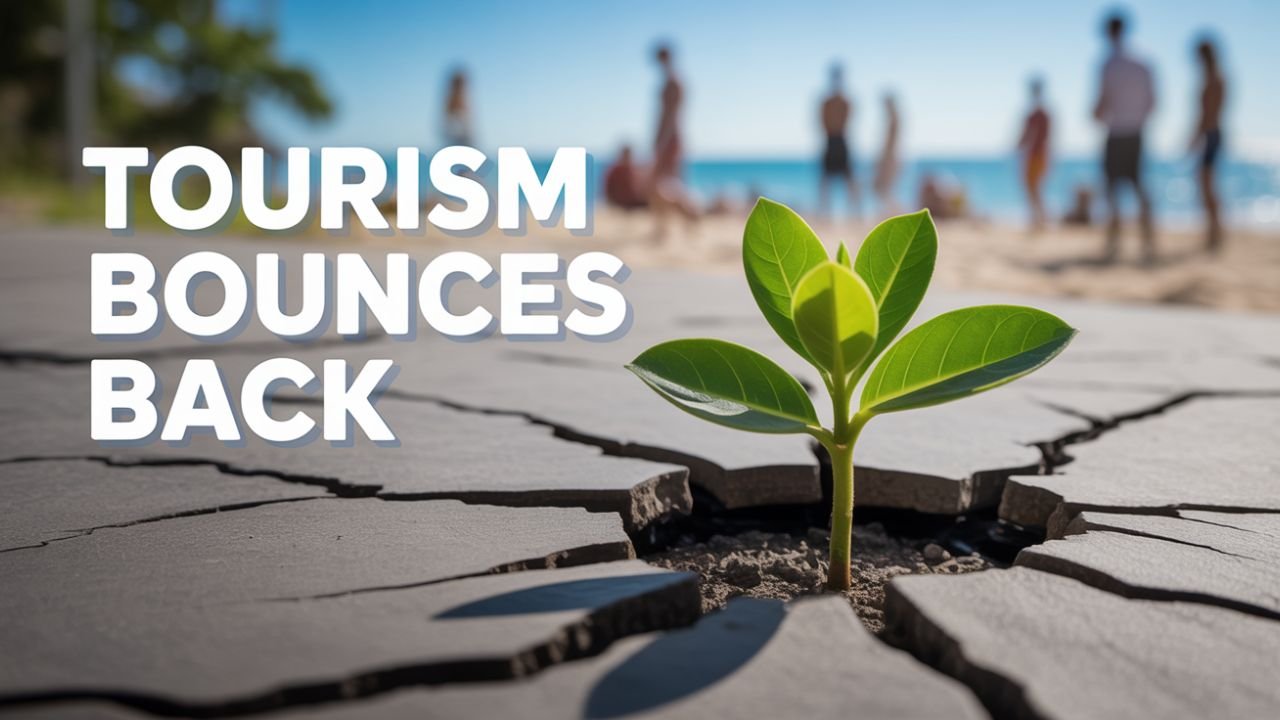How to Build Resilience in the Tourism Ecosystem for Future Crises: Tourism in 2025 has gone far beyond the traditional mindset of people traveling by making a list of famous sights. Today’s travel has become person-centric, tech-enabled and environmentally conscious. Now tourists travel not only to see, but also to feel, understand and connect with the local culture. Cities and the tourism industry are also adopting this change and using smart tools and technologies that not only provide a better experience to travelers, but also make life balanced and comfortable for the locals. As artificial intelligence (AI) and data-driven solutions advance, it is becoming clear that the future of travel will revolve around technology, sustainability and personalized experiences.
1. AI-driven personalization: Travel now tailored to you
One of the most important features of 2025 is providing travelers with personalized experiences. Artificial intelligence (AI) is now capable of analyzing millions of data points such as travelers’ search history, location and on-site behavior to understand what information or suggestions are most relevant to them at a given moment. For example, a smart AI tool like ‘Mira’ can now suggest local cafes, undiscovered museums or family entertainment spots to a tourist based on their taste at the very moment they need it most. Such personalized service is capable of giving travelers a trip that matches their mood, not just the guidebook.
2. Data-Driven Destination Management: A Step Towards Balanced Tourism
Crowding at tourist destinations is no longer just an inconvenience, but a challenge to the quality of local life and sustainability. Cities are now using smart data to redirect tourists to less crowded destinations. AI-based dashboards like ‘Mira’ now show cities how crowded a place is and which area can be promoted. This not only provides a better experience to tourists but also provides relief to locals. This trend lays the foundation for a balanced tourism model of the future where both development and social balance are valued.
3. Interactive Tourist Infrastructure: A Merger of Technology and Land
When the digital world is connected to the physical world, the experience becomes much more immersive. This is why smart kiosks, multimedia totems and interactive stations are now becoming popular. They not only provide ticketing and information, but also offer services such as storytelling, directions, and emergency alerts with the help of AR (Augmented Reality). Such smart devices make travelers more independent, aware, and safe, while providing real-time feedback and data to local authorities.
4. Digital Nomadism and Remote Work: Combining Work and Travel
The number of digital nomads in the world is estimated to be around 40 million in 2023, and it is estimated that this figure will reach 60 million by 2030. These people enjoy work and travel by staying in the same city for months. They need a digital guide that can give them accurate information about local rentals, co-working spaces, and community events. AI guides like ‘Mira’ are emerging as a trusted companion for these digital travelers, giving them every information they need and making an unknown city feel like home.
5. Omnichannel Travel: One Experience Across All Platforms
Today’s traveler expects a seamless experience at every step—chatbot interactions at home, mobile apps while traveling, and smart kiosks upon arrival at the location. This kind of omnichannel experience allows travelers to stay connected and get continuous guidance at every step. Mira’s web app and on-site totem are integrated so that the user’s created plan appears wherever the user logs in. This feature makes travel not only convenient, but also extremely organized and personalized.
6. Promoting Sustainability through Smart Routing
Another important trend for 2025 is making travel eco-friendly. AI-based travel planners now group attractions based on geographic proximity in a way that reduces the need for non-essential transportation and encourages walking or public transport. This not only protects the environment but also contributes to the UN’s sustainable tourism goals. This new direction offers responsible and smart options for both travelers and planners.
7. Inclusive and multilingual experiences: Language is no longer a barrier
Language diversity has long been a barrier for international travelers. But now, with the help of AI technology based on natural language, it has become possible to automatically translate content such as signs, audio guides and restaurant menus. Systems like ‘Mira’ already support multiple languages, enabling tourist destinations to welcome global tourists without additional costs.Inclusivity not only attracts more tourists, but also makes their experience deeply rich.
Key Findings: The Essence of Future Travel
Travel in 2025 is built on the fundamentals that any modern traveler holds dear—personalized experiences, sustainability, and technological convenience. AI and data have become powerful tools that guide the experience, not just tools.
- Personalization drives trust and engagement.
- Data enables cities to control tourist flow.
- Hybrid touchpoints (such as totems and apps) provide travelers with assistance where they need it.
If you want to shape your travel for the future—whether you’re a traveler, a city, or a tourism business—understanding and adapting to these trends is a must.
